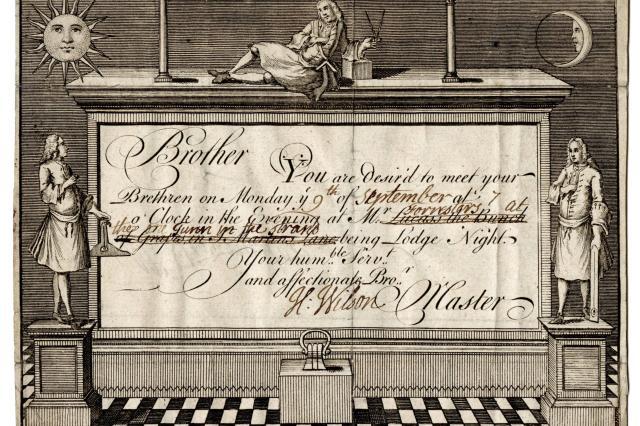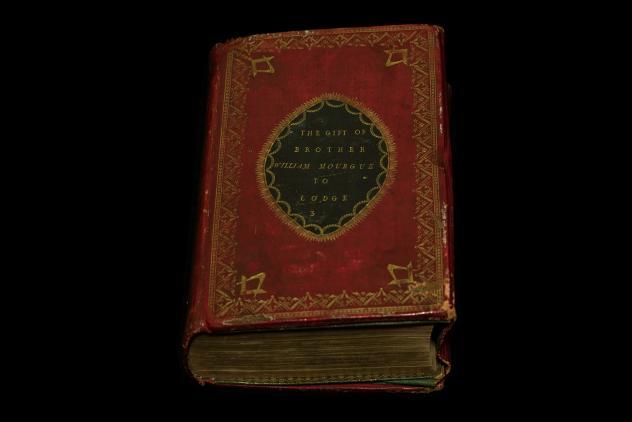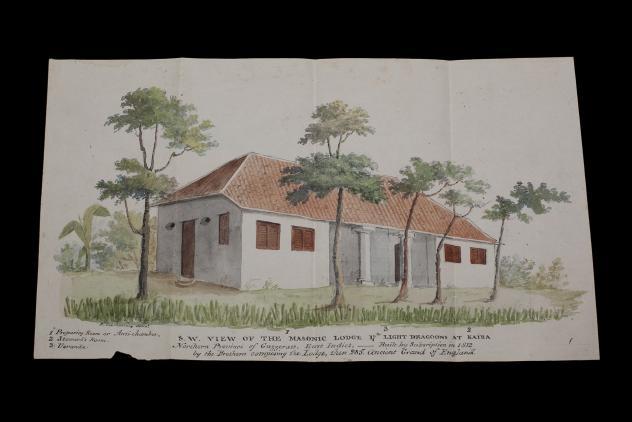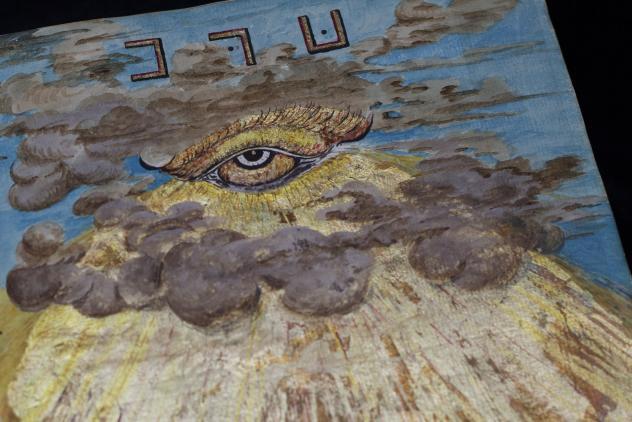At the end of the Museum of Freemasonry’s North Gallery, where we attempt to fit the 300 year history of freemasonry into one room, sits a display case we call ‘suitcase stories’.
Stacked at the bottom of it, are 18 cases, and amongst the usual regalia, are a number of bits of ephemera. The most recognisable of these is the summons to attend meetings. They may not look like much, but as these examples from our collections show, you’d be surprised what they can reveal if you’re willing to do a bit of detective work!
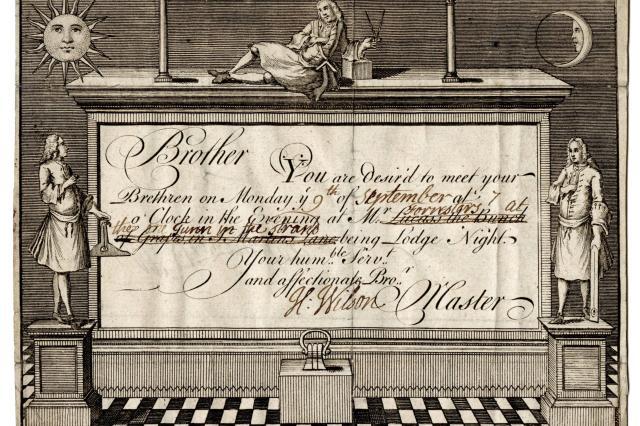
My first summons presented a bit of a puzzle. Instead of the name and number of the Lodge, as you would expect to see today, there was only the request to attend a lodge night at ‘Mr. Forrester’s at the One Tunn in the Strand’. This was fairly common in the early years of freemasonry as, before lodge names were formalised, they were referred to by the tavern they happened to be meeting in at the time.
More interestingly, it’s obvious that ‘the One Tunn in the Strand’ was not the regular meeting place of the lodge which produced this summons. Reading through the correction, it looks like this particular lodge usually met at ‘the Bunch of Grapes in St. Martins Lane’.
It is possible to find details of lodge meeting places by using Lane’s Masonic Records. This helpful online resource allows users to search for particular lodges by name, number, meeting place and general location. However, the Georgian tendency for vague address locations often makes things a bit tricky. More on that in a minute.
The crossing out suggests these summonses were being printed in large quantities and used over an extended period of time, possibly years, given that the summons itself doesn’t specify a date. In an effort to pin one down, I searched a website of historical calendars to narrow the field to years where 9th September fell on a Monday. I knew the date had to fall within the lifetime of the printer, Benjamin Cole (whose name appears on the bottom of the summons), and the website identified several possible years, including 1734, 1745, 1751, 1754 and 1765. Based on what the gentlemen on the summons are wearing, and after consulting colleagues, I concluded that 1734 was the most likely choice from those dates.
With that in mind, I was able to go back to Lane’s to investigate whether any lodges were meeting the One Tunn in the Strand or the Bunch of Grapes in St Martins Lane in the 1730s. The results were mixed. I couldn’t find any lodges recorded as meeting regularly at the One Tunn in the Strand in the 1730s, but I did find a record of St. Alban’s Lodge meeting at the Bunch of Grapes, Drury Lane, in 1736 which, given the proximity to St. Martin’s Lane, made it a likely candidate for the origin of this summons.

My second example, whilst not as visually appealing, certainly has something to say about the tenacity of freemasons and their desire to meet, whatever the situation.
It’s a summons for Gastrvrijheid Lodge, a lodge formed in an internment camp in the Netherlands during the First World War. Internee Commodore Wilfred Henderson, a member of Royal Naval Lodge in England, took advantage of the relaxed conditions in the camp and asked the local Dutch lodge for permission to use their temple for meetings. The Lodge met for the first time in May 1915.
The real story of this summons, is that it represents how important freemasonry was to these interned members. This particular example was sent to Edward Stanley Harding, summoning him to attend a meeting to initiate him as a member of the lodge. In a rather charming nod to attention to detail, Edward’s standing as an initiate is recognised in the alternation of the printed greeting from ‘Bro’ to ‘Mr’. To me, its survival is testament to how much his freemasonry meant to him.
There are hundreds, if not thousands of different examples of summonses, each with its own story to tell. What I hope I’ve managed to illustrate, is just how much information you can glean from these small, often discarded, fragments of a lodge’s history. Where they have been retained, they provide a tantalising glimpse back in time, through the lens of the masonic lodge and its members.
